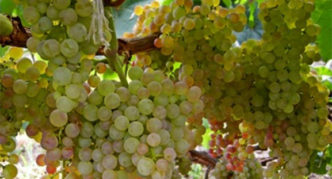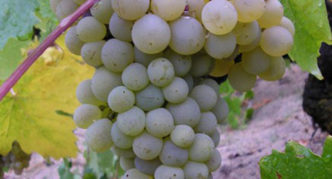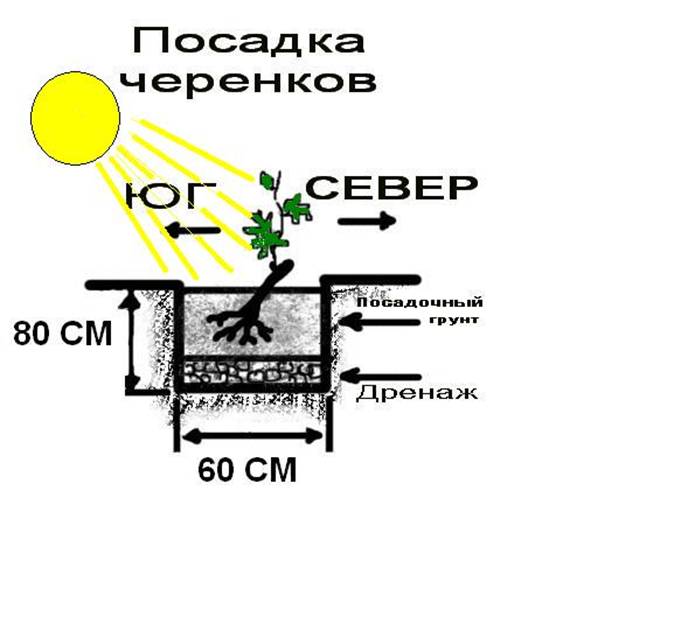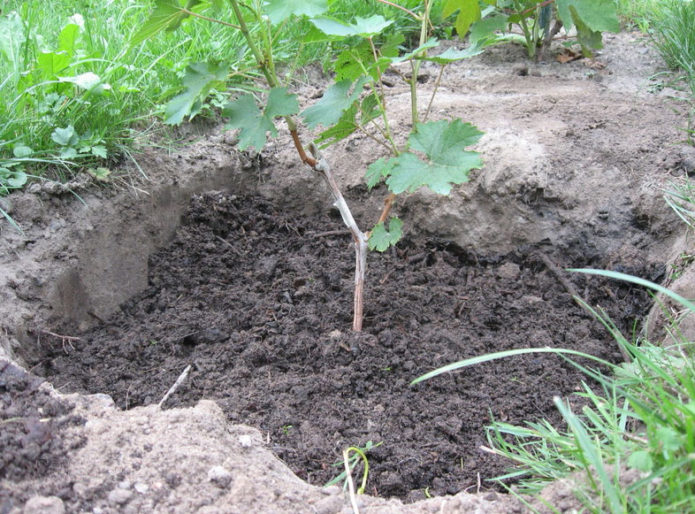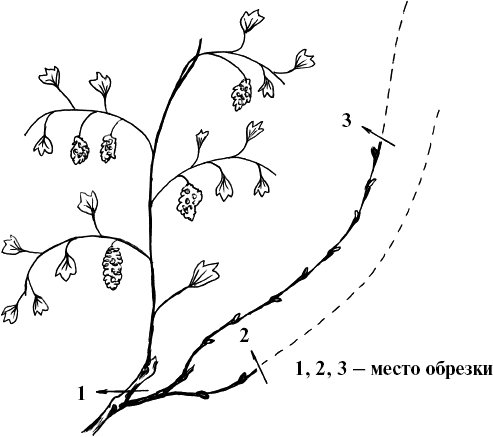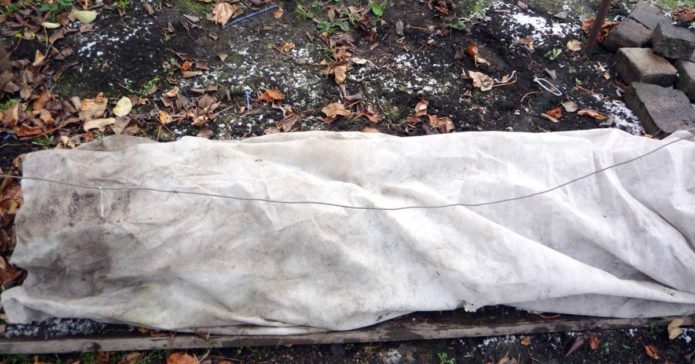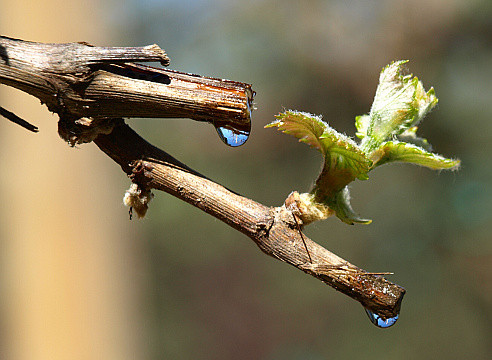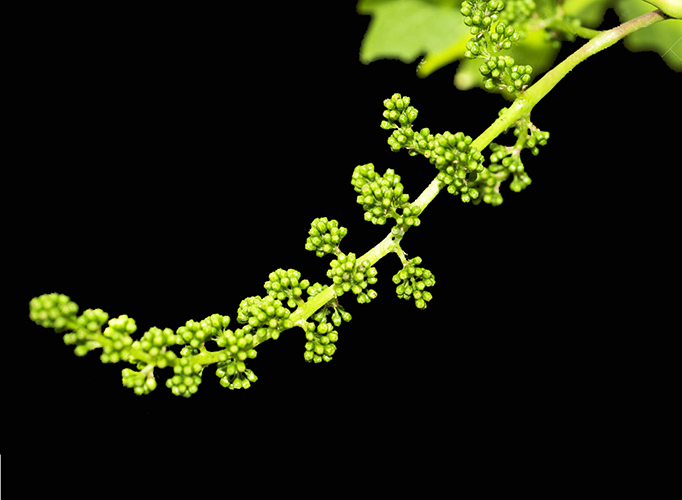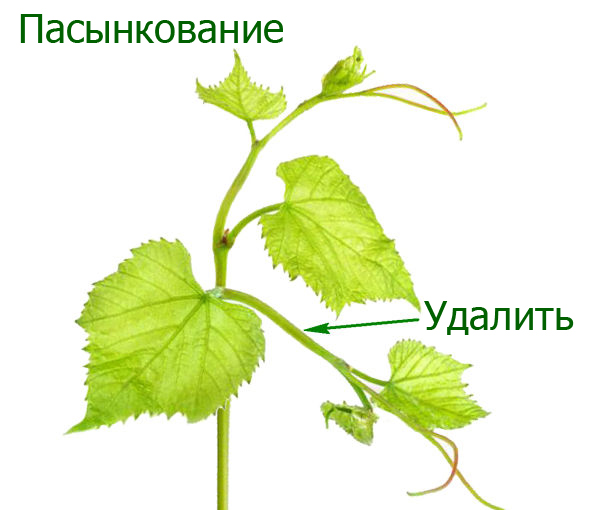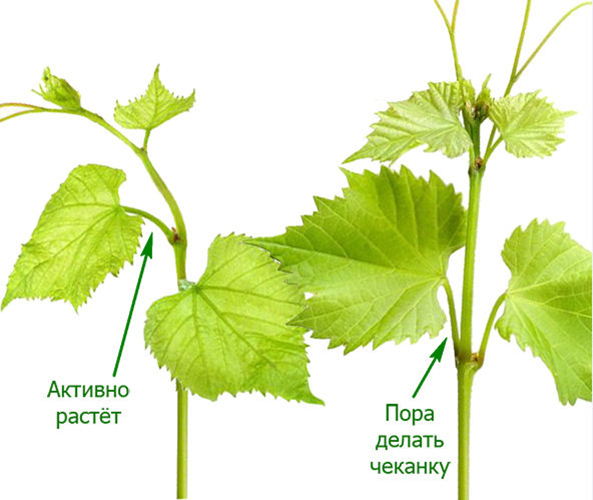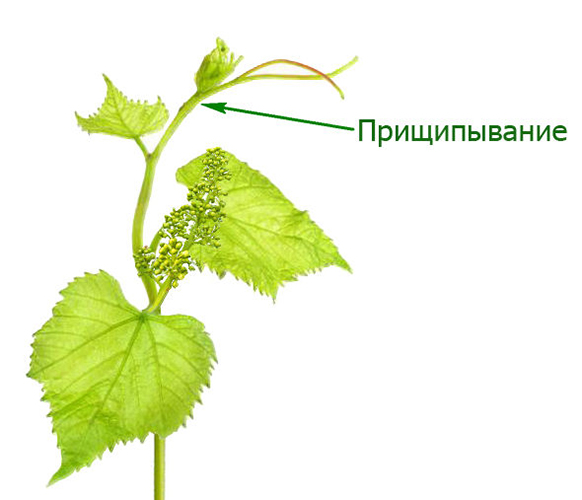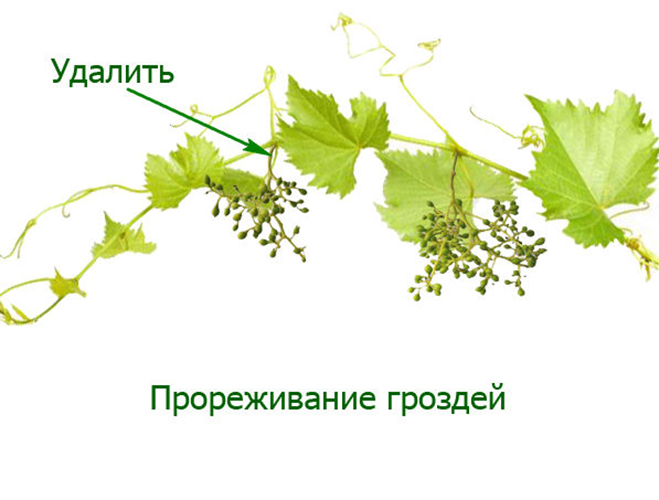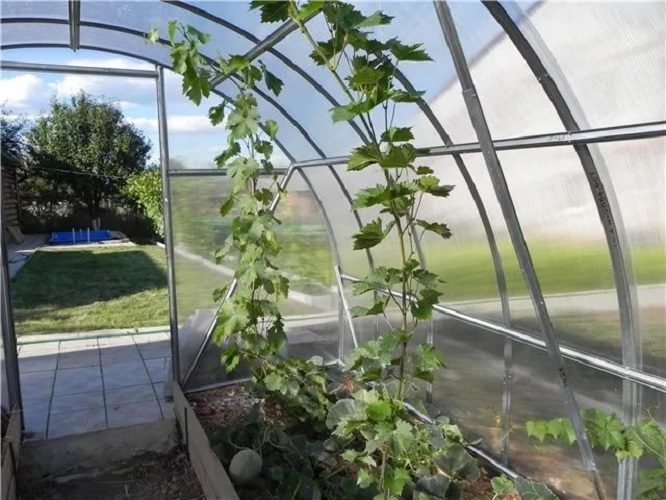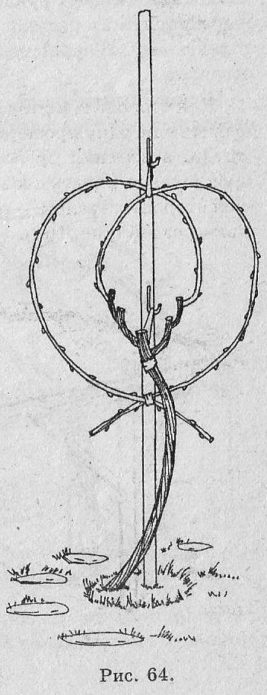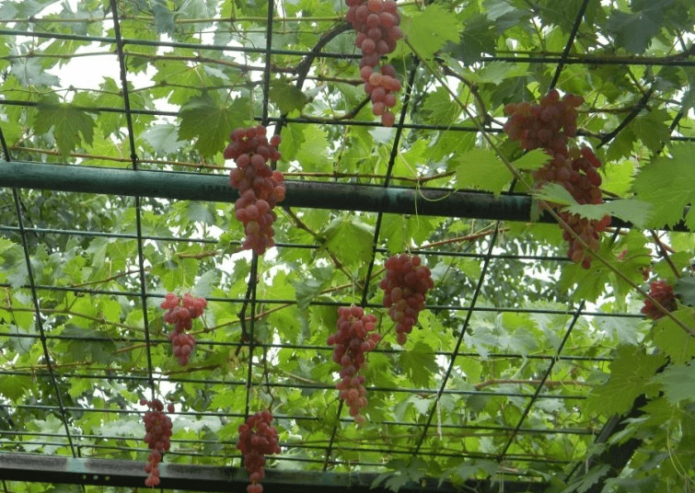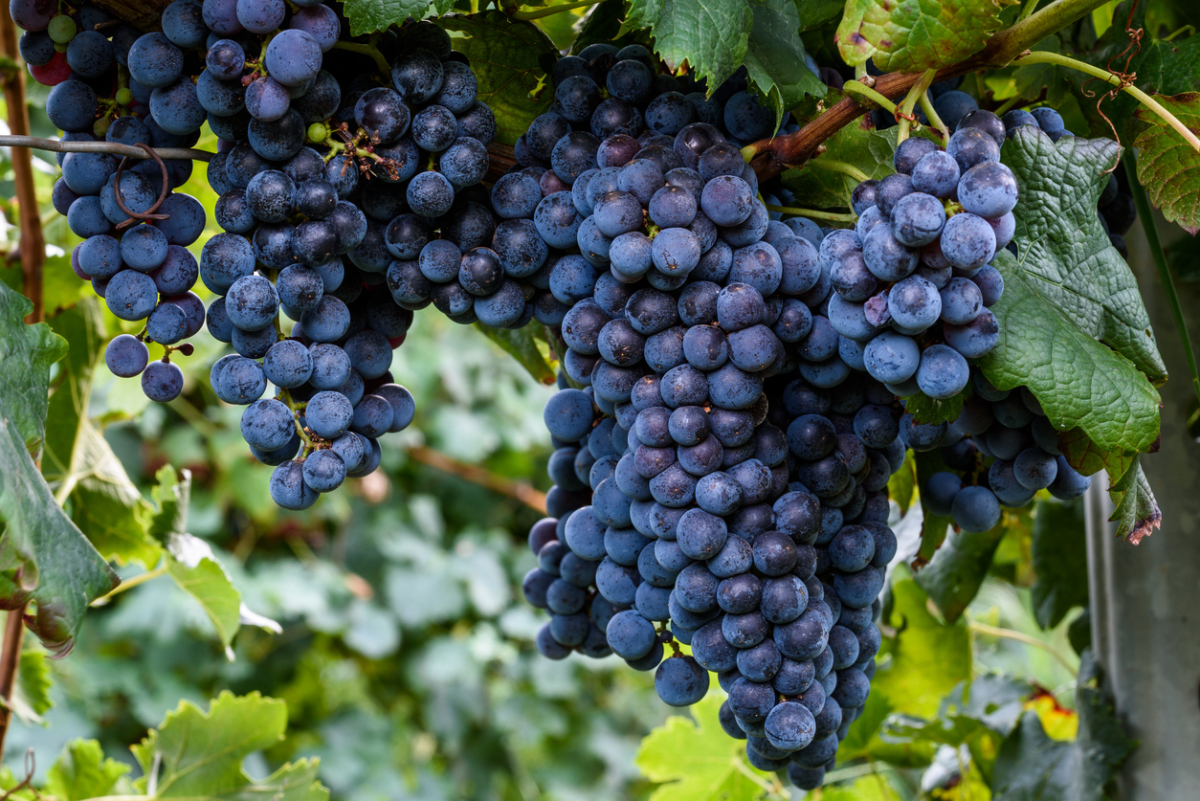There is an opinion that it is very difficult to grow grapes in the Moscow region. But the northern climate gives several advantages - there are not many pests and diseases of this plant, which are common in the southern regions. Therefore, it is extremely rare to treat vineyards with chemicals, which is very important in modern environmental conditions.
Content
Methods of growing grapes in the Moscow region
The methods of growing grapes are determined by two factors - the types of supports on which it will be attached, the place and landing pattern.
The landing site can be:
- open ground;
- greenhouse;
- greenhouse.
Growing grapes in the open field
The most important condition for the successful cultivation of grapes in the Moscow region is the correct choice of the variety. Breeders have developed varieties that feel great with a relatively short and cool summer. Zoned for growing grapes in the middle lane fruiting requires only 90 or 100 days with an average daily temperature of +18aboutFROM.
Knowing what characteristics you need to pay attention to, choose a grape variety.
Table: characteristics of several grape varieties for cultivation in the Moscow region
| Name varieties | Ripening period (days) | Frost resistance | Availability bones (PCS.) | The quality and weight of the bunch (d) | Flowers | Berries | Others characteristics |
| Currant Russian* | 110–120 | -26 ° C | Not | Loose, 102 | Self-pollinated | Rounded, golden |
|
| Moskovsky stable* | 100–120 | -30 ° C | 1–3 | Loose, 97 | Self-pollinated | Oval, light green |
|
| Jubilee Novgorod | 110–120 | -30 ° С | 1–2 | Loose, up to 200 | Self-pollinated | Rounded oval, light green |
|
| Muromets * | 100–110 | -25 ° С | 1–4 | Loose, 400 | Self-pollinated | Oblong-oval, dark purple, almost black |
|
* The data in the table are from the State Register of the Federal State Budgetary Institution "State Sort Commission".
Photo gallery: grape varieties for open ground
- The grape variety Korinka Russian has no seeds
- Moscow resistant grape variety is resistant to frost
- The Muromets grape variety has almost black berries
- The Yubileiny Novgorod grape variety has a yield per bush of 3.5 kg
Seat selection
Growing grapes, like any plant, begins with choosing a planting site.If there is only one bush at the dacha, then the sunniest area near the southern wall of the house or a fence, illuminated by the sun all day, is suitable for it. If you plan to plant several bushes in an open place, then you must definitely take care of their protection from the wind. This can be an additional fence made of willow or reed, a dense green hedge.
Rows of grapes are oriented from north to south, and wind protection - from west to east. If possible, it is best to plant a seedling at a distance of 50-60 cm from the southern wall of the house or barn.
How to prepare a place, plant seedlings and care for them:https://flowers.bigbadmole.com/en/yagody/vinograd/vinograd-na-dache.html
Soil preparation
Before planting, you need to prepare the soil and form ridges. To do this, land from the site is mixed with:
- sand;
- humus;
- gravel or broken bricks.
The proportions depend on the soil of the site. The mixture should be well permeable to water and air. Add 500 g of superphosphate, ash and bone meal per 1m² of the bed. The ridges are formed 35 cm high and 1 m wide.
Planting a seedling
Newcomers to viticulture need to know the difference between a grape seedling and a chubuk. A seedling is a plant with roots, and a shank (cutting) is a part of a matured annual vine, which still needs to be rooted. Chubouks are often offered on the market.
Before planting, a planting pit is prepared with a size of 80x80x80 cm, where the grapes are placed. The roots of the seedling are placed at a depth of 25 cm. The first bud from the roots should be 5 cm below the surface of the ridge.
Between the bushes they leave from 70 cm to 1 m, and between the rows - from 1.5 m to 2 m. Grapes planted more rarely in a row will be more difficult to cover if frosts hit during the snowless period.
Water the seedlings when planting and several times over the summer (if necessary). In the year of planting, seedlings are not fed. The fertilizers that have already been applied to the soil are enough.
Video: planting a grape seedling in the Moscow region
Pruning
They begin to cut grapes from the very first fall, if they planted it in the spring. The procedure is carried out in October, before the onset of freezing temperatures. From 2 to 9 buds are left on the vine, counting from the surface of the soil. 2 buds are left if the bush gave a very small increase in the first year. In this case, pay attention to the color of the vine. The green part is cut off, leaving the brown, woody part.
Shelter grapes for the winter
In the first winter after planting, grapes of any varieties (even frost-resistant ones) must be protected from low temperatures. They shelter it in November, when the air temperature is stable at –5 ° С. Earlier shelter leads to the vines podpevat and death of the buds on it. There are several ways to cover grapes in the Moscow region:
- Spruce branches. First, it is laid on the ground, and a vine is placed on top of it. Pinned to the ground. Cover with spruce branches on top. When snow falls, it will serve as additional insulation.
- Dry shelter. Everything, as in the first case, only the bush covered with spruce branches is covered with a wooden box and tar paper or film.
- Covering material. Material folded in 5–6 layers (lutrasil or the like) is used in the same way as spruce branches.
- With soil from row spacing or peat, with a layer of 25–30 cm. This method of shelter is not very reliable, since the soil will become wet during the thaw. When it gets colder, it will freeze. The vine under it will also freeze and may die.
They choose a way to shelter grapes for the winter, in accordance with their physical and material capabilities.
Video: pruning and covering a bush of young grapes in the Moscow region
Spring works
In the spring, they remove the shelter from the grapes, but not immediately. It is opened during the day, when temperatures above zero are established, and covered with spruce branches (or lutrasil) for the night, if frosts are possible.As soon as the temperature reaches + 4 ... + 5 ° C at night and no frost is expected, the bushes are fully opened. After that, they need to be treated with a 3% solution of Bordeaux liquid or 5% solution of ferrous sulfate. Such spraying brings several results:
- protects against fungal diseases;
- destroys mold.
Iron sulfate treatment is done if you want to delay the opening of the kidneys by 10-14 days. Bordeaux liquid does not give such an effect.
After processing, the vines are tied to supports. They need to be positioned horizontally so that not only the upper shoots grow. If the vines are fixed vertically, they will develop shoots from the buds located at the top. This is due to the fact that the culture, like any plant, tends upward. The grapes bear fruit on the shoots of the current year.
Newbies may be disturbed by such a phenomenon as the crying of the vine - the release of juice in the places of pruning. This is normal for grapes. As soon as the shoots grow 10 cm, the crying will stop.
The first processing and tying of grapes in the spring, top dressing and frost protection:https://flowers.bigbadmole.com/en/yagody/vinograd/vesennie-rabotyi-s-vinogradom-posle-zimyi.html
Fertilizers must be applied to any soil. The first feeding is done immediately after opening the bush. At a distance of 50 cm around the plant, a groove is dug 40 cm deep. A solution of mineral substances is poured under each plant:
- 10 liters of water;
- 20 g superphosphate;
- 10 g of ammonium nitrate;
- 5 g of potassium salt.
When the clusters have already formed, but the buds are still closed, each grape bush is fed with the same solution.
Summer work
In summer, work is done on green shoots. The complex of these measures is called green operations. They include:
- wreckage;
- pinching;
- chasing, pinching;
- thinning leaves and bunches;
- garter.
A fragment was called an operation to remove shoots that are superfluous to form a bush. In early spring, all the buds are removed at a distance of 15 cm from the base of the bush so that there is a sufficient distance between the fruiting shoots on different last year's vines. In May, when it is already clear which shoots will not bear fruit, the barren ones are broken out so as not to thicken the bush. If you cannot break off these shoots with your fingers, then you are late with this operation. Now you have to cut them out, which injures the bush much more.
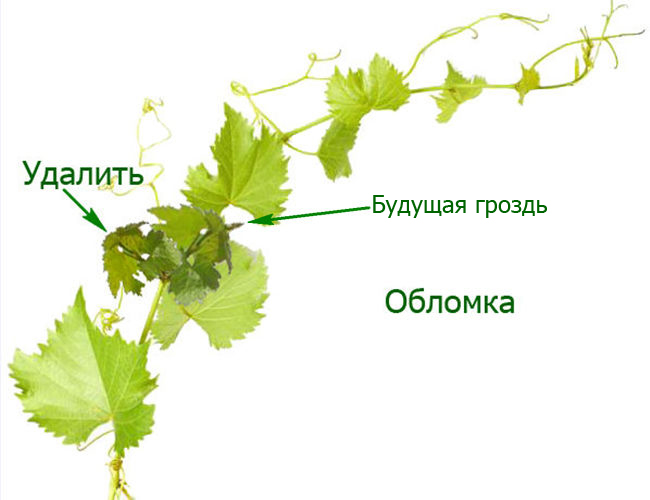
A fragment of grapes is made when it is already clear which shoots will not bear fruit, the barren ones break out
When pinching, side shoots are removed on the main vines. They thicken the bushes and draw off the nutrients necessary for the main vine to form high-quality fruits.
Embossing is the removal of the top of the shoot with 5–8 upper leaves so that the vine has time to ripen before frost. The time of the procedure is determined by the development of the vine. If its top is straightened, then the intensive growth of the vine has stopped. The growing point (top) is removed so that the processes of preparation for winter begin.
By pinching, remove the tops of the shoots with several unblown leaves. A procedure is applied to prevent shedding of flowers and ovary. It is carried out 5–6 days before flowering. This will increase the mass and number of bunches.
When thinning the leaves, the leaves shading the clusters are removed. In seasons with insufficient heat and rains, this accelerates the ripening of grapes, protects against rotting, increases the accumulation of sugar in the berries.
Thinning the bunches will help to get larger bunches, remove the peas (very small fruits).
The garter allows the vines to resist the winds and get enough light.The vertical garter of the vines of the current year contributes to their uniform growth, airing the bush, and prevents diseases.
The grapes are very responsive to additional food. In the summer, foliar dressing is carried out before and after flowering. A solution for them is prepared from the following substances:
- water - 10 l;
- urea - 40 g;
- citric acid - 20 g;
- boric acid - 15 g;
- iron vitriol - 1 g
Root dressing:
- during the ripening period of the berries, only superphosphate and potassium salt are introduced: for 10 liters of water - 20 g of superphosphate and 5 g of potassium salt;
- after harvest - only potash salt.
In late summer - early autumn, they harvest.
Greenhouse for grapes
A greenhouse is a small, unheated building designed to protect plants from adverse weather conditions. Grapes in a greenhouse feel much better than in the open field of the Moscow region.
It is worth growing medium-sized varieties in a greenhouse, since it is limited in area and height. It is planted at a distance of 50–80 cm from the walls so that the leaves do not come into contact with the film. If the grapes are planted in a greenhouse in several rows, then the distance between them should be at least 2 m. There must be vents so that the moist air does not stagnate.
The average daily temperature in a greenhouse is 4–5 ° C higher on a sunny day, and by 2.5–3 ° C on a cloudy day than outdoors. Due to this, the growing season of the grapes is extended by 15-30 days. The berries begin to pour 12-15 days earlier and have time to ripen well.
Cover the greenhouse with foil, glazed frames or polycarbonate in April, when snowfalls are no longer expected. After the air in the greenhouse warms up to + 10 ° C, the bushes are opened. Further work on the care of the grapes is the same as for open ground. In the fall, when the bushes are prepared for winter, the film is removed from the greenhouse. During the winter, pests and pathogens in the soil will die.
Pruning grapes in the fall, instructions with diagrams and pictures for beginners:https://flowers.bigbadmole.com/en/uhod-za-rasteniyami/obrezka-vinograda-osenyu.html
Greenhouse grapes
For growing grapes in a greenhouse, the necessary conditions must be created:
- greenhouse frame and cover designed to withstand large amounts of snow;
- good thermal insulation so that plants do not die in frost;
- reliable heating and lighting system;
- natural and forced ventilation;
- drip irrigation system, so as not to overmoisten the air;
- a frame made of wire or trellis, to which the plant will be attached.
The grapes are planted at a distance of at least 50 cm from the walls of the greenhouse. The soil is prepared for this in the same way as for open ground. When the kidneys wake up, the temperature in the greenhouse should fluctuate from + 14 ° C during the day to + 8 ° C at night. The temperature is gradually raised to + 24 ° С during the day and + 16 ° С at night. During the ripening of the bunches, it should be even warmer - in the daytime up to + 30 ° С, at night not lower than + 18 ° С. During the dormant period of grapes in the greenhouse, it should not be colder than 0 ° С, but preferably + 5 ° С.
They take care of the crop in the greenhouse in the same way as in the open field. The only subtlety is the wire frame on which the vine is attached; it is placed at the walls 20 cm from them, and along the roof - at a distance of 40 cm from it.
Growing grapes on a support
Supports for grapes can be:
- count;
- gazebo or arch;
- trellis.
A stake is a single support. It can be metal or wood. Usually, a length of 2.8 m is used. The support is dug into the ground to a depth of 80–100 cm. At 40 cm from the ground surface, a plank 20–30 cm long is attached at an angle of 45 °. At 10-15 cm from the upper end of the support, an inclined bar is also attached, but already directed upwards. To grow grapes on such a support, a bush is formed with a long (160-170 cm) stem. At its top, there are green fruiting shoots. This shape is called cupped.Green shoots are rationed at the end of May, 6–10 shoots are left on the bush.
The use of such a support has its advantages:
- shoots do not grow so quickly in length, it is easier to carry out green operations;
- clusters are high above the ground, well ventilated, get sick less;
- no need to put powerful pillars with a wire stretched between them, as for a trellis;
- the distance in the row between the bushes is 50 cm.
A grape arbor is a metal or wooden structure with a large horizontal surface. The metal pipes of the racks are buried in the ground to a depth of 50 cm. A horizontal frame is attached to them. On vertical and horizontal surfaces, a wire is pulled every 40 cm. For such arbors, as well as for trellises, they make a fan-shaped bush.
Trellis is a structure made of pillars and wire, located vertically. Its height depends on how vigorous the grape variety will grow on it. Trellis posts are dug into the ground at a distance of 1.5–2.0 m from each other. The wire is pulled every 50 cm, counting from the ground. In the Moscow region, it is advisable to make low trellises in the open field, so that during recurrent frosts, the tied up grapes can be covered with a film. They are also installed when growing crops in greenhouses and greenhouses.
In the Moscow region, it is quite possible to grow grapes that taste good, relying on the experience of people who have devoted a lot of time and effort to this. By following their recommendations on the choice of variety, planting site and method of care, you will definitely get a quality harvest.
